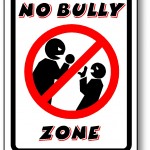
Elizabeth K. Englander, Ph.D.
By TARA PARKER-POPE
What do you do if your child is traumatized by online bullying? And what can be done to help bullies understand the impact of their actions? Those are among the questions about cyberbullying readers asked our expert, Elizabeth K. Englander. Dr. Englander is a professor of psychology and the founder and director of the Massachusetts Aggression Reduction Center at Bridgewater State College, which provides anti-bullying and anti-violence training programs and resources to schools and families.
Q.In the case of cyber- or text-bullying, what do you suggest if the victim’s grades start to drop or he or she feels too degraded to attend school? What type of disciplinary action do you recommend for the aggressors? — Concerned
A.Dr. Englander responds:
You’ve asked two questions here. First, how can you help your child cope with the trauma of being cyberbullied? And second, what is the appropriate way for schools to respond?
Let’s begin by addressing the first question. I’ve seen many kids traumatized by both bullying and cyberbullying, and it is an undeniably painful ordeal for both you and your child. Parents want to just take away the hurt, but as with all traumas, an instant solution isn’t going to be possible. So the trick is to focus on (a) restoring your child’s sense of safety in school, and (b) building up his or her other emotional resources so that the trauma has as little impact as possible.
You may need to meet with your school’s administrator and your child’s teachers to construct a plan to improve your child’s sense of safety in school. Consider possibilities like: can we reduce the contact between my child and the bully as much as possible? Can we increase the contact between my child and the children he or she likes and enjoys being with? Can we increase adult supervision?
It’s also helpful to plan how your child will handle unstructured settings — for example, you don’t want your child to have to walk into a cafeteria and be faced with having to find a safe place to eat. A table with friends, or at least friendly children, should be prearranged and ready and waiting, with an adult who has an eye on it.
Finally, a big part of the plan should be a safe person whom your child can see, upon demand, until he or she feels better about school. Ask your child whom he or she particularly likes. Is it the principal? Or a guidance counselor? Or maybe the school nurse? Arrange to have that individual tell your child, in person, that he or she may come visit anytime, with no restrictions. Although some children will exploit this privilege to avoid schoolwork, that is a separate issue that can be addressed later — their sense of safety must come first.
It’s important to build up a child’s emotional resources by underlining that there are people who love and care for them. Arrange for play dates for your child, or offer to let your child host a party for friends. Spend more family time together, and do something fun that the kids will really enjoy. The goal is to make their good feelings about the people in their lives “stick out” more than their anxieties or fears around the cyber-related incidents.
Your second question is about the appropriate response for schools. This is a trickier problem. Generally speaking, my understanding of the law (with the caveat that I’m not a lawyer) is that schools are limited to responding to misbehavior that occurs either on school grounds or that has a “substantial disruption” upon the school. That term, “substantial disruption,” is a legal term, and it has not been really defined by the courts. When an incident involving cyberbullying occurs, school administrators must make a judgment call: it may be true that a child has been traumatized, but has the incident caused a “substantial disruption” to our school? If the answer is “no,” then regardless of your child’s emotional state, schools may feel that they cannot, legally, opt to discipline a cyberbully.
Legal constraints, however, do not mean that the school’s hands are 100 percent tied. There are still important ways that the school staff can respond to cyberbullying, even when they determine that there is no disciplinary jurisdiction.
School administrators and other staff members can and should try to support and help the child or children who are the targets, as I’ve discussed above. They should educate potential cyberbullies about the risks that they are taking online — perhaps by arranging a meeting in the principal’s office — and they should warn students that any further bullying or retaliation in school will not be tolerated. They should also warn the target’s teachers to be on the lookout for any such bullying, and they should make a safety plan in conjunction with the target’s parents. Finally, they should check back with the target and his or her parents to ensure that no further incidents are being overlooked, and that the target is progressing towards a better and more safe feeling about school.
The bottom line is that this issue is new to all of us, parents as well as educators. You may not only need to help your child through this trauma, you may need to help educate your school’s administrators as well. Free materials on our Web site, MARCcenter.org, might help. Good luck.
Q.What should the teachers/administrators and parents do to help the bullies? I am a teacher and I can console and counsel the bullied students, but it is the bullies themselves I worry about. They seem to have no empathy and no concern for the consequences of their actions. They mostly think what they are doing is funny. I don’t know how to help them understand how hurtful they are being. I fear they will turn to worse crimes as they grow older, as they have no respect for other people’s feelings or property.
A.I commend you for your empathy. So many K-12 teachers today are feeling overwhelmed by this problem that the difficulties faced by bullies themselves often get lost in the mix.
Of course it’s true that victims and targets need to be the first concern, but adults should be concerned about all children — including those who are trying to engage us by misbehaving severely. One principle of our society (and our legal system) is that children can, and should, be rehabilitated — we should at least try.
That being said, what needs to happen with bullies? Much of their callousness is probably posturing, since statistically speaking, it just isn’t likely that we’ve bred that many children who truly lack all empathy. And of course, remember that bullies are typically rewarded by their peers for appearing indifferent — particularly as adolescence approaches. And right there is where we need to start.
Bullies need to learn empathy, but first and foremost, they need to learn to adhere to the rules of society and of their school. This means that we need to ensure that they understand the rules and the consequences if they break them, and then we must follow through with any consequences that we have already identified. Following through is often the hard part, but it must be done.
In addition, the bullies’ peers need to learn about their own behaviors that support and enable bullying. If a bully finds himself or herself isolated for bullying, that is a powerful incentive to stop.
Finally, you want to know how to help these children be empathetic — to not simply behave properly, but believe that it’s right to behave correctly. This final goal may not be within the reach of an educator. The child’s parents may need a referral to a good psychological counselor who can help this child understand why he or she persists in abusing others.
 First, listen; gauge the seriousness of the incident and whether there is a history of such bullying.
First, listen; gauge the seriousness of the incident and whether there is a history of such bullying.















